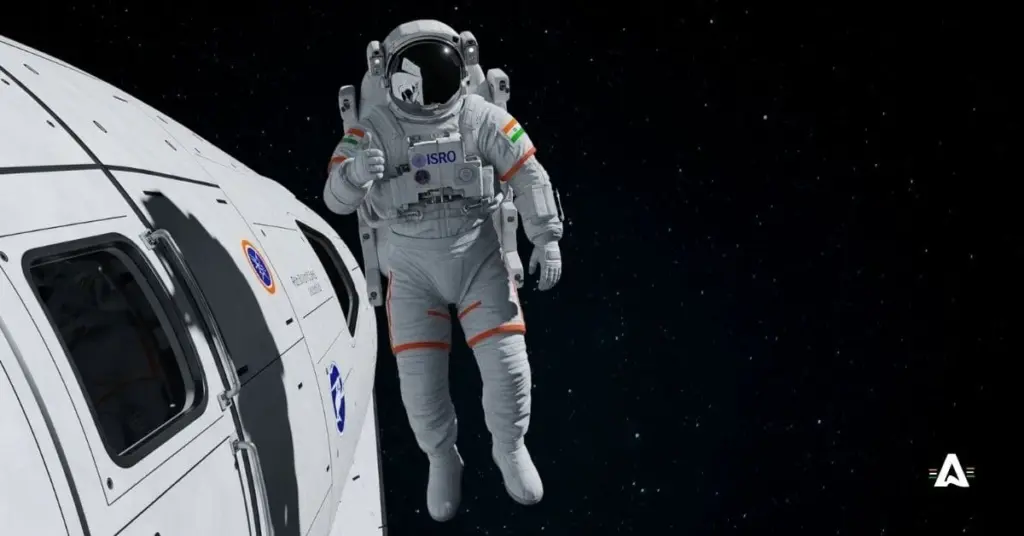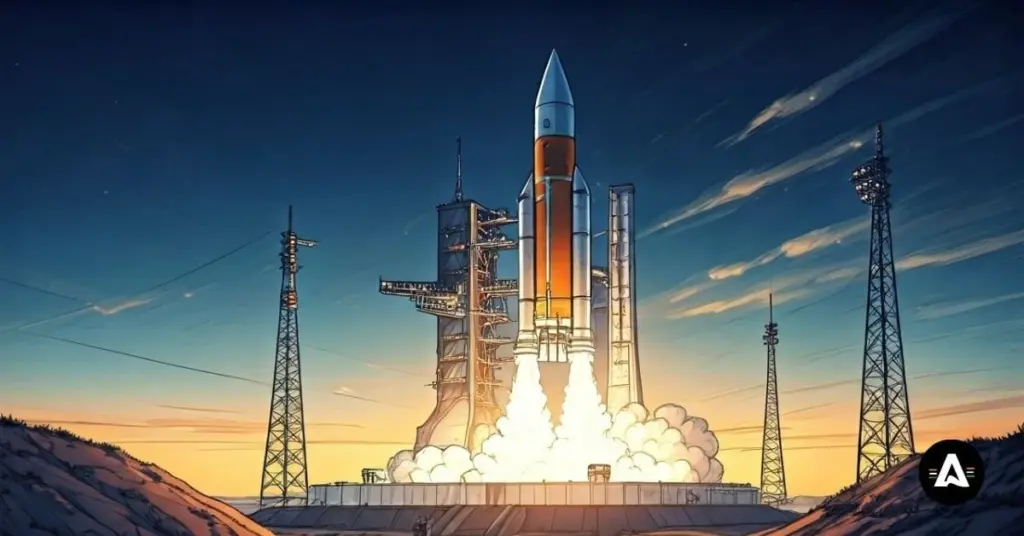Indian Mars Mission: How Mangalyaan Changed Space Travel
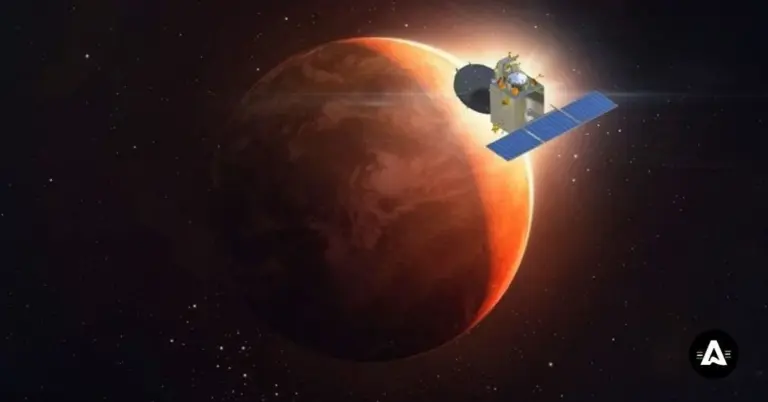
Mangalyaan, also called India’s Mars Orbiter, was the country’s big step into exploring other planets. It went into Mars orbit on its first attempt in September 2014.
The launch was handled by the Indian Space Research Organisation (ISRO). With this, India became the first Asian nation and only the fourth space agency in the world to get to Mars.
The orbiter worked for about seven and a half years. During this time, the spacecraft studied the Martian surface, atmosphere, and looked at the planet’s shape, or morphology.
The Mars Orbiter was sent into space using the cost-saving Polar Satellite Launch Vehicle (PSLV). It traveled around Mars in a highly elliptical orbit.
Mangalyaan carried five science instruments with it. These tools helped the team get key data on the red planet’s makeup and how the air moves on Mars.
This win showed that India can get big things done even with small budgets. A lot of people around the world praised and celebrated what India and ISRO did with their mars orbiter.
Introduction
India’s Mars Orbiter Mission (MOM) is also called Mangalyaan. It was launched in November 2013. This was a big step for India’s work in space. This mars orbiter was important because it was India’s very first attempt to send an orbiter to Mars. It showed that India is getting better in space technology and interplanetary travel.
One of the most notable things about the Mars Orbiter Mission was how it did so much while keeping costs low. This set a new standard for how space missions can be done in a practical way. Another thing that stands out is that Mangalyaan was able to get into the Mars orbit on its very first attempt. This showed that India can handle the tough job of sending an orbiter to Mars and making it work right, all with great skill. The mission proved that India has what it takes to do such complex space tasks with care and know-how.
The MOM mission showed that India has strong technical skills. It also proved the country is serious about moving forward in science and exploring planets. The mission made it clear that the Indian Space Research Organisation (ISRO) can create the special tools needed for space travel between planets. ISRO showed it can take on big goals in space research and trips.
The success of the Mars Orbiter Mission showed that India can do well in space science. This big step helped boost the country’s name in the global space world. The orbiter also gave hope to many young people. It made future scientists and engineers want to try new things and reach new heights in the study of space. Now, many look up to the mars orbiter mission as a proud moment for India.
Origins and Development of Mangalyaan
The successful journey of Mangalyaan started when the Indian Space Research Organization (ISRO) wanted to move India’s space projects forward. After the big win with the Chandrayaan-1 lunar orbiter, ISRO set its sights higher. The team wanted to show that they could go even further. So, they made a plan to send an orbiter to Mars. This step was huge for India. It helped the country learn more about traveling from one planet to another.
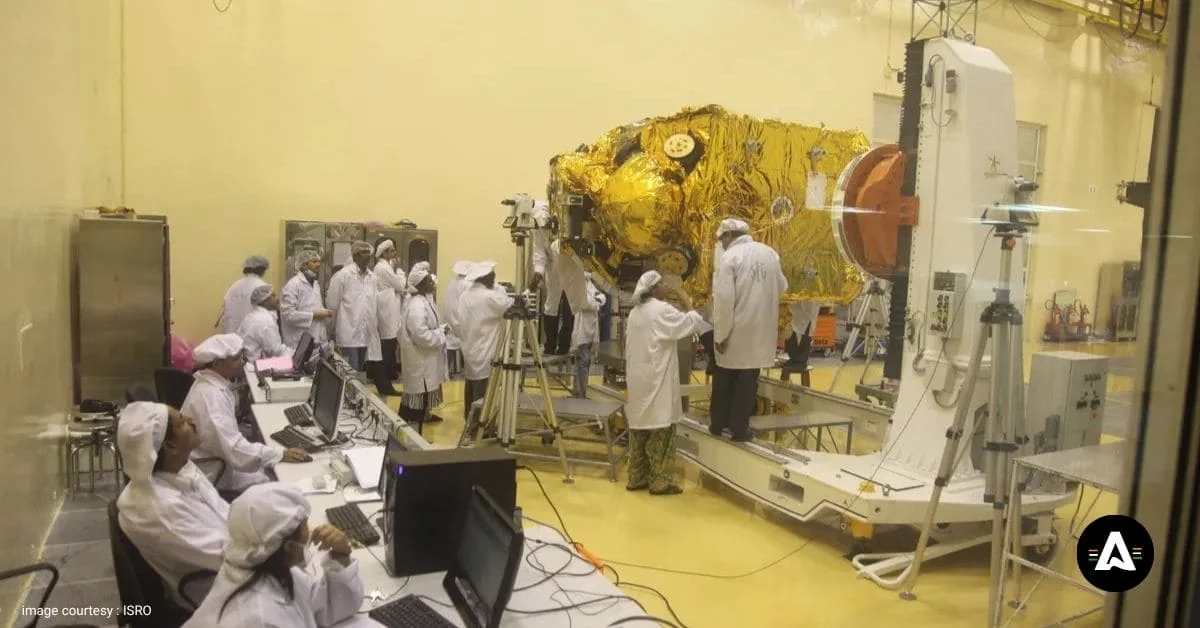
ISRO used their deep knowledge in making scientific instruments and smart planning to get ready for the Mars Orbiter mission. The team spent years working hard on planetary exploration. All that effort led to the start of the Mars Orbiter, which was a big goal for them. The mission showed India’s skill in space technology. It also showed how India is becoming an important part of the world of space exploration with the mars orbiter mission.
The Mangalyaan mission shows how India has a strong and creative spirit. It also proves that ISRO is not afraid to try new things in space. With great planning and hard work, India reached a new level with Mangalyaan. This also put India on the world map for space missions. The team at ISRO used new technology to make this happen. Mangalyaan is a great example of what India can do in space, and it gives hope for many more missions in the future.
Vision, Planning, and Team Behind the Mars Orbiter Mission
The Mangalyaan mission came about because of the forward-thinking ideas of the Indian government and the smart work at ISRO. The main aim of this mission was to show what India can do in space technology and to carry out important science studies on Mars. This two-part goal got the interest and backing of leaders and scientists. In the end, their support made sure that the mission was approved.
A team of ISRO engineers worked very hard to make this mission happen. They had to get everything done within a short amount of time. The team took great care in planning every part of the mission. They used good ideas and methods from the Chandrayaan project before this. For Mangalyaan, the main goal was to improve the scientific instruments on the spacecraft. The team also made sure the spacecraft could take care of itself and had what it needed for a trip to another planet.
The hard work and skills of women leaders in different parts of the team were praised all over India. These women used their knowledge and dedication to help in every stage of the mission. They worked on things like planning where the spacecraft would go in space and building its hardware. The Mangalyaan mission’s good result showed off ISRO’s strong technical skills. It also showed how committed and skilled their science team is. This success made many people in India feel proud.
Overcoming Budget and Technological Challenges
The success of the Mars Orbiter Mission from India, called Mangalyaan, is a clear example of meeting big technology dreams without spending too much. The main goal was to send an orbiter to Mars, and the team did it with only $74 million. This low cost made it one of the most affordable Mars missions to date. The people working on the orbiter showed great thinking and skill. They used smart engineering ideas and found ways to use local items, which helped save money. The Mars Orbiter Mission proves that you can take on huge projects and reach Mars, even with lower costs, when you work together and use what you have.
ISRO’s ingenious use of PSLV
Mangalyaan is also called the Mars Orbiter Mission by India. It went through many problems, like having to use the pslv rocket and dealing with the limits of the geosynchronous satellite launch vehicle. Even with all that, the spacecraft was able to move in a highly elliptical earth orbit. After that, it started its important trip to Mars. The mars orbiter, or orbiter, was made for just six months in orbit. But Mangalyaan did more than anyone thought because of its great working power.
The mission showed that India has strong skills in both technology and space exploration. It also proved that the country can do big things even when there are not many resources. Mangalyaan kept working much longer than expected. This helped scientists and engineers gather very important data about Mars, also known as the red planet. Because of Mangalyaan, we now know much more about Mars and its atmosphere. This has been a big help to us in learning about the red planet.
The success of Mangalyaan shows that India is becoming stronger in space exploration. It also proves that the nation is ready to keep moving forward and to try new things in science and technology.
Innovation was key to making the mission a success. New solar panels were made to help the spacecraft save more energy. The team also put in automated controls, so the spacecraft could travel in space with little help from people on Earth. These smart choices helped Mangalyaan reach its goals. They also helped india get ready for more big space missions. The use of things like solar panels on the spacecraft showed what india can do in space.
The Mangalyaan mission helped India stand out in the global space community. It showed that the country can do great things in space, even when there is not much money to spend. The story of this success points to the need for creativity, new ideas, and smart planning. These are what help to push limits and find new ways in space research and technology.
The Launch and Journey to Mars
On November 5, 2013, Mangalyaan lifted off on the Polar Satellite Launch Vehicle (PSLV C25) from the Satish Dhawan Space Centre in Andhra Pradesh. The launch vehicle took a path that was not the usual one. It had to fire its engine several times when the spacecraft was still in Earth’s highly elliptical orbit. This way, Mangalyaan was able to slowly move out from that orbit and get ready for the long trip to Mars.
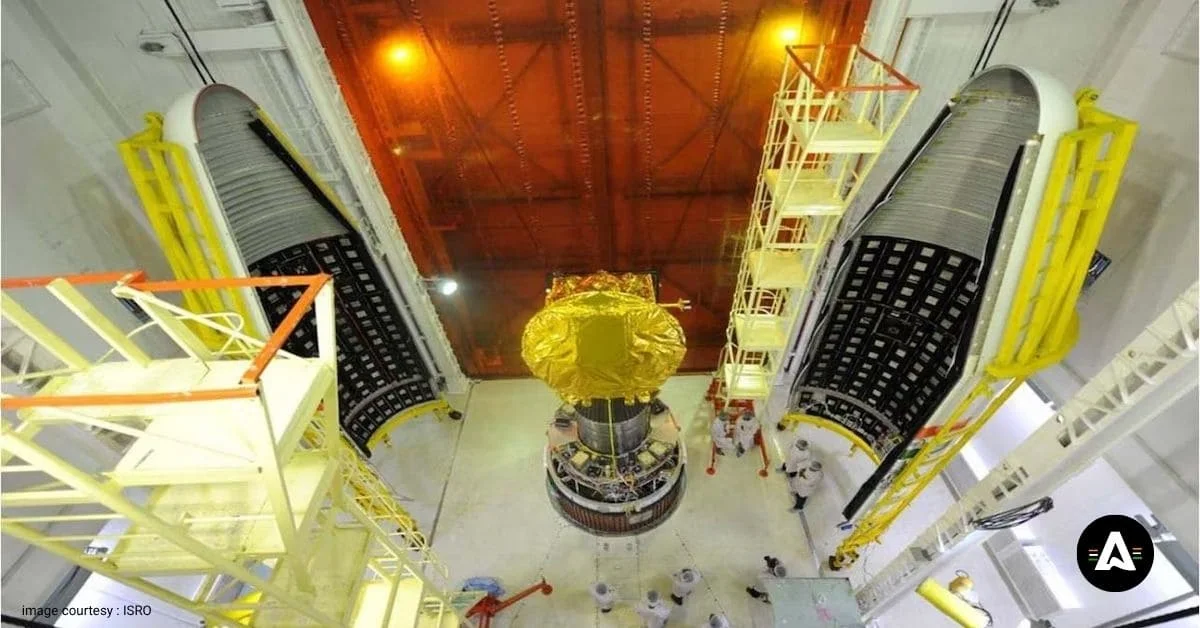
After close to 300 days in space, the Mars craft traveled over millions of kilometers. It reached orbit around the red planet on September 24, 2014. This was India’s first attempt to go to Mars. Because of this, India became well known in the world of space.
Indian Mars Mission: Key Milestones and Timeline
From the beginning to the end, Mangalyaan reached many big moments. The table below shows the timeline for the mission.
Event | Date | Details |
|---|---|---|
Launch Window | November 5, 2013 | Mangalyaan lifted off aboard PSLV-C25 from Satish Dhawan Space Centre. |
Earth Orbit Maneuvers | November–December 2013 | Multiple engine firings designed Mangalyaan’s trajectory for deep space. |
Mars Transfer Trajectory | December 1, 2013 | Spacecraft left Earth’s gravity and set course for Mars. |
Mars Orbit Insertion | September 24, 2014 | Orbiter successfully entered Mars orbit, closest point: 420 km, farthest: 80,000 km. |
Each step of India’s first interplanetary mission used careful math. This showed the smart thinking and planning behind the mission.
Innovative Propulsion and Navigation Techniques
Mangalyaan went to Mars and reached the red planet with a successful mission. This mission was able to meet tight budgets and meet all the technical needs. The spacecraft had a special way of using fuel. It used its unique system to start and stop its engine several times while going around in an elliptical orbit. This helped it build up the speed it needed to go to Mars.
When the spacecraft arrived at Mars, careful math helped decide the best time to start the engines. This made sure that Mangalyaan went into the right path around the planet. Even though there is less sunlight at Mars, the solar panels on the spacecraft gave it the power it needed to keep working.
Also, its navigation systems used smart, standalone technology. This means the system did not need to rely much on ground stations on Earth. Because of that, it helped to lower delays when sending and receiving messages. These smart steps helped make travel between planets work better and faster. They also set a new standard for what space travel can be like in the future.
Orbiter’s Scientific Achievements and Discoveries
Mangalyaan worked much longer than its first planned mission life. This spacecraft sent back important data from Mars. With its scientific instruments, it helped us learn more about the planet. The data showed us details about the Martian atmosphere, what the surface looks like, and which minerals are there. All this has helped people better understand Mars and its morphology.
Among the best findings were the sharp images of Mars’ surface that came from the Mars Color Camera on Mangalyaan. The Methane Sensor for Mars also gave us key data about the gas methane in the martian atmosphere. These results help us know more about the red planet and get people all over the world excited to work together to explore Mars.
The success of Mangalyaan’s long mission shows how important it is to explore space and learn more about planets like Mars. This marks a big step in the history of planetary exploration. By using the best new technology and by working with other countries, we keep finding new ways to do science and explore space. Together, we open the door to more discoveries and great ideas for the future of space.
Major Findings About Mars’ Atmosphere and Surface
Mangalyaan is India’s Mars Orbiter Mission. The mars orbiter helped us learn more about the martian surface and the air around mars. It had a Mars Colour Camera. With this camera, the orbiter took clear pictures of mars. The images showed craters, valleys, and ice at the poles. These pictures gave us important new facts about what mars is made of. The mars orbiter and its camera helped India and the world know more about mars with these new details.
One important thing that the spacecraft Mangalyaan found on Mars was the gas methane. It did this using its Methane Sensor (MSM). This made people talk about the idea that some small life, called microbes, could have lived on Mars. The spacecraft also used thermal imaging to check the mineralogy of Mars’ ground. It found clay and silicate minerals. These point to the chance that water was on Mars in the past.
Mangalyaan did more than just study the martian surface. It also looked at the martian atmosphere. It checked deuterium and hydrogen levels on mars. By doing this, it gave us good information about how water has gone away from mars little by little over time. This helps people know more about how the planet has changed and what the martian environment was like in the past.
Contributions to Global Space Research
Mangalyaan is India’s low-cost mission to explore other planets. It made a big mark in the world of space research. The work done by this mission showed that it is possible to use simpler and less expensive ways for space travel. After seeing the good results from Mangalyaan, countries and space groups around the globe, like NASA and the European Space Agency, also started to think of better and cheaper ways to send missions far away from Earth.
Mangalyaan worked with other missions, like NASA’s Curiosity rover, to study several events in space. For example, in June, it saw comet Siding Spring come close to Mars. These results showed that Mangalyaan can do many kinds of jobs. It also helped people in other countries who want to start their own space missions by sharing what it learned.
The Indian Space Research Organisation (ISRO) has gained a lot of respect around the world because of what it did with Mangalyaan. India, through ISRO, has sent important data on Mars to the world, working with NASA, the ESA, and using its own research as well. This shows that India is now an important part of space and science work. The good results of the Mangalyaan mission show that India has strong technology and that working together with other countries matters a lot in space. This team effort helps everyone learn more about Mars and makes the world of space exploration grow.
Conclusion
The Indian Mars Mission, called Mangalyaan, is a big step for India in space travel. It shows that India can use new ideas and technology to reach big goals. With this, India got on the world map for space work. The mission also helped people learn more about the Martian atmosphere and the surface of Mars. Now, it is easier for new missions to Mars to move ahead. ISRO managed all this with a small budget and faced main challenges. This shows that even tough space jobs can be done if you make a good plan and work smart.
When we look at what is next, the work that Mangalyaan did will help new engineers and scientists dream big. The work from this mission helps all of us see what is possible in space travel. If you have an interest in these types of space missions, and you want to know how the science behind them works, you can get a free consultation.
Frequently Asked Questions
The Indian Mars Mission, Mangalyaan, aims to demonstrate various technologies for interplanetary missions, including propulsion and navigation. Key objectives include studying Martian surface features, morphology, atmosphere, and mineral composition, while also showcasing India’s capabilities in space exploration. This mission marks a significant milestone in India’s space endeavors.
Mangalyaan was India’s first mission to Mars. With this mission, ISRO became the fourth space agency in the world to reach Mars. India was the first Asian nation to send a mission to Mars. This showed that ISRO has the skill and knowledge needed for space work. The Space Applications Centre and others helped, too.
ISRO took what it learned from Mangalyaan and used it in new projects like the Venus Orbiter Mission, Mangalyaan 2, and the Moon Impact Probe. These things help India’s space program get stronger. When ISRO works on these new missions, it can go further into space and find out more about other planets near Earth. This also helps India make its future orbiter missions and other projects even better.
Mangalyaan carried five scientific instruments on board. The tools included the Mars Color Camera, the Methane Sensor, and the Mars Exospheric Neutral Composition Analyser. These helped the team study the atmosphere of Mars. The group also learned about the shape, or morphology, of the surface and the minerals on the planet. Data from these scientific instruments gave people new facts about Mars. It also helped everyone who works in the study of planets.
Mangalyaan, India’s Mars Orbiter Mission, showed how well India can do in space exploration. The mars orbiter stood out not just for science but also for being low-cost. The whole mars orbiter mission cost only $74 million. That is much less than what NASA or the Soviet Union spent for the same kind of mars projects.
The mars orbiter mangalyaan showed the world that you can get good results even with a small budget. It kept working even after its designed mission life ended. This showed how much Indian people can do when they plan and use their money well. Their mars orbiter work was very clever and made india proud.
The success of Mangalyaan showed that even big, new projects can be affordable. India proved this mission can be good and compete with others around the world. It was a key example of how using new ideas, smart planning, and being careful with money helps reach big goals in space. Mangalyaan inspired not just India, but the whole space community. It showed you can do important work in space without spending too much.
In April 2022, India lost contact with its Mars Orbiter Mission, known as Mangalyaan. This spacecraft was supposed to work for a short time, but it kept on going much longer than first planned. In the end, it stopped working because it ran out of fuel and lost power after a long time in the shadow. Even though the orbiter is not working now, Mangalyaan is still seen as a great success for India in space.
The mars orbiter showed how much India can do with technology, and it was a big step forward for the country in space. What it did keeps on giving hope and ideas for new space missions and science, both in India and in other countries.


